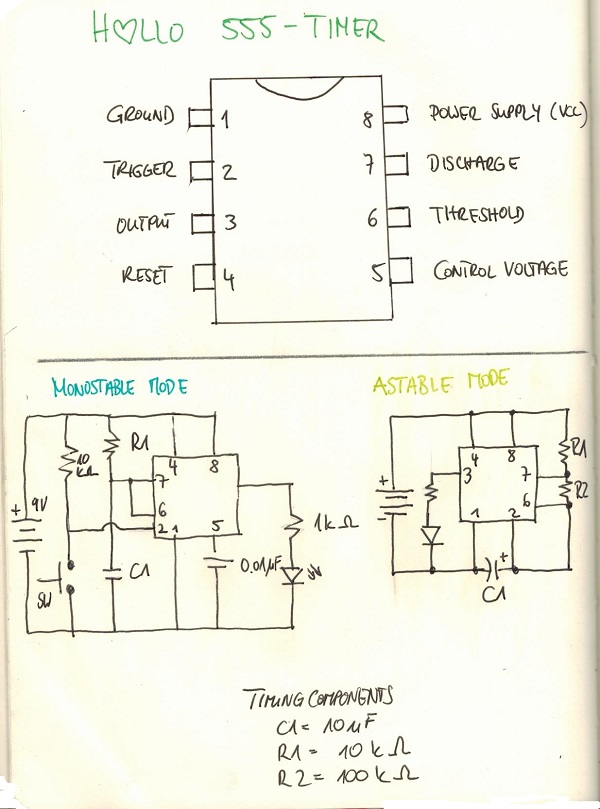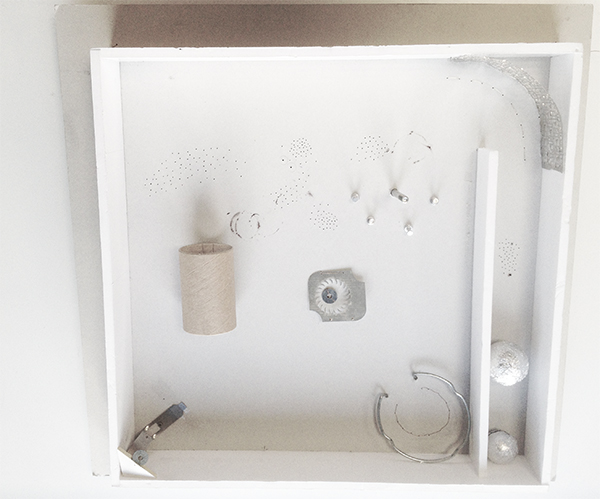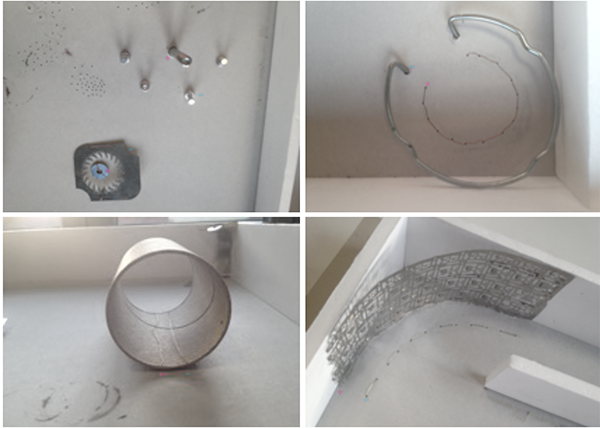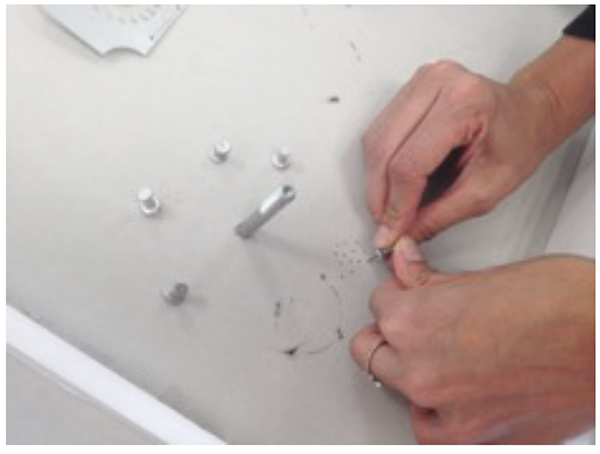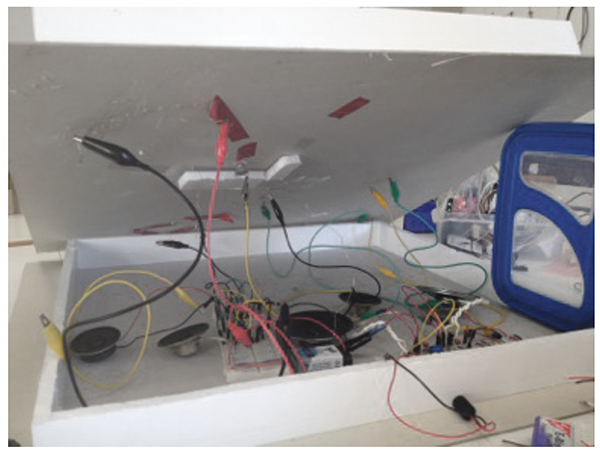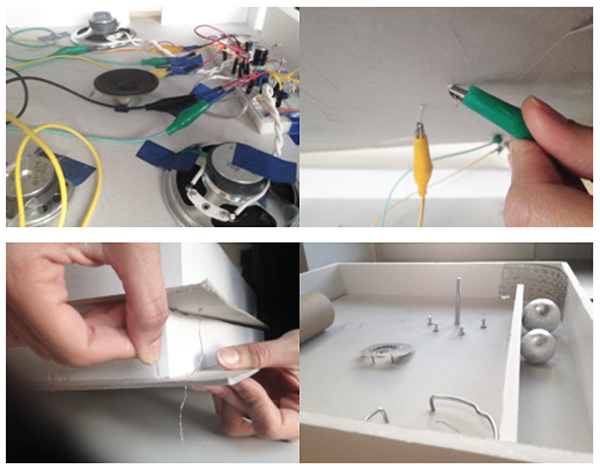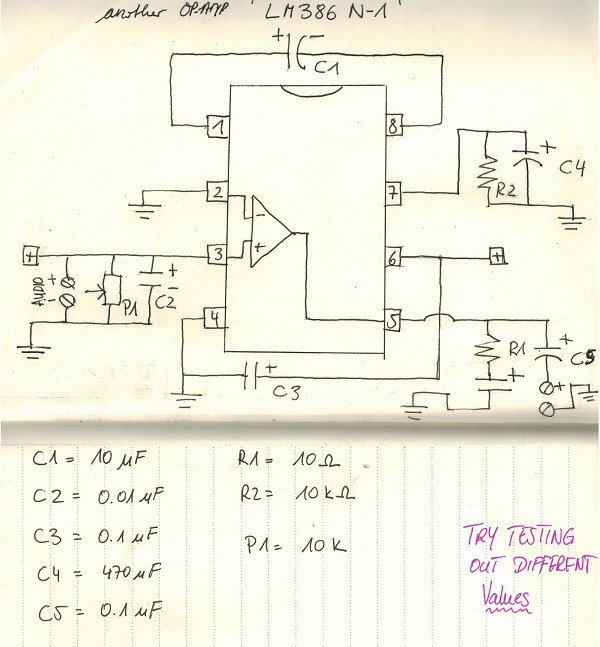No edit summary |
|||
| Line 67: | Line 67: | ||
== ASSIGNMENT 2 - == | == ASSIGNMENT 2 - VARIABLE RESISTANCE == | ||
<br> | <br> | ||
For the second assignment I started some research on the piezo and got interested in the fact that it doesn't work as an acoustic microphone but one that's depending on vibration. | |||
So my attempt for the beginning was to use it as an input into the 555 circuit in monostable mode (for some reasons it did not work at all in the astable mode). So there was a permanent sound of the circuit and whenever I touched the piezo it gave some really small extra sound, pushing it harder did make it a little bit louder. Instead of the loudspeaker I used a LED to see the changes better. In this case my body was working as a variable resistance. I wanted to get a stronger signal that I could also work with. In this class and in the following last block I was occupied with researching on some amplifyer circuits. | |||
There are some different amplifyers that I came across but I kept on working with the LM385N for my piezo research. | |||
In another course I printed loudspeakers by the silkscreen printing technique for which I used the LM 386N-1. | |||
[[File:lm386ayla.jpg]] | |||
The last OP-AMP I came across in my research is the 741, which I didn't tested already but I will add some schematics on this too. | |||
Revision as of 20:51, 5 January 2016
SOME BASICS
ASSIGNMENT 1 - IMPROBABLE SWITCH
Aline and me decided to make a"simple pinball switches" in a box.
We went through some trash bins on the campus and found some thicker cardboard boxes, probably used by architecture students. We also found some conductive materials that were our six obstacles aka our six switches. Between the two cardboard boxes we put two breadboards that were creating five sounds. With the help of some alligator clips we connected every obstacle on the inner side with some copper wire to the breadboards.
So each obstacle was one part of the switch. The circuit was closed when the ball that was wrapped in aluminium foil touched the positive and the negative part of the obstacle.
Because the speakers were inside the box, the sounds were a bit silent so we made some holes on the sides of the box and also some smaller ones on the board itself.
While building we realized that it's always that you have to think about how to attach something to another part, make it stiff or make it flexible, also.
Inside the machine, we worked with five 555 timers in two different breadboards.
The main constructions was the same but the values were varying in relation to different values of the resistors between the pins 6-7 and 7-8 and the capacitors between pins 1-2 and 3.
Circuits: 1 ) R2 : 1 M ohm 2) R2: 10K ohm 3) R2: 100K ohm R1 : 100 K ohm R1: 10K ohm R1: 10K ohm 1 - 2 :0.1 μF 1 - 2 : 0.1 μF 1 - 2 : 0.1 μF 3: 1μF 3: 47μF 3: 100μF 4) R2 : 1K ohm 5) R2 : 10 K ohm R1 : 1 K ohm R1 : 100 K ohm 1 - 2 : 0.1μF 1 - 2 : 0.1μF 3: 22 μF 3: 47μF
ASSIGNMENT 2 - VARIABLE RESISTANCE
For the second assignment I started some research on the piezo and got interested in the fact that it doesn't work as an acoustic microphone but one that's depending on vibration.
So my attempt for the beginning was to use it as an input into the 555 circuit in monostable mode (for some reasons it did not work at all in the astable mode). So there was a permanent sound of the circuit and whenever I touched the piezo it gave some really small extra sound, pushing it harder did make it a little bit louder. Instead of the loudspeaker I used a LED to see the changes better. In this case my body was working as a variable resistance. I wanted to get a stronger signal that I could also work with. In this class and in the following last block I was occupied with researching on some amplifyer circuits.
There are some different amplifyers that I came across but I kept on working with the LM385N for my piezo research. In another course I printed loudspeakers by the silkscreen printing technique for which I used the LM 386N-1.
The last OP-AMP I came across in my research is the 741, which I didn't tested already but I will add some schematics on this too.
ASSIGNMENT 3 - Final Project


